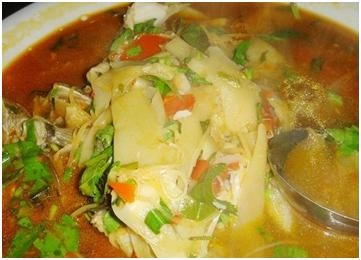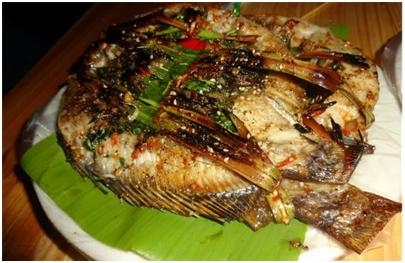CSC3150代寫、Java/C++程序語言代做
時間:2024-04-04 來源: 作者: 我要糾錯
CSC3150-Instruction-A3
Introduction
This assignment uses xv6, a simple and Unix-like teaching operating system, as the platform to
guide you in implementing the mmap and munmp system calls. These two are used to share
memory among processes and to map files into process address spaces. Generally speaking,
this assignment focuses on memory-mapped files. A mechanism supporting memory-mapped
files can handle files as if they are a portion of the program's memory. This is achieved by
mapping a file to a segment of the virtual memory space (Reminder: Each process has its own
virtual address space). Such mapping between a file and memory space is achieved using the
'mmap()' system call, and the mapping is removed using the ' munmap() ' system call. We
provide a virtual machine image where everything is configured and set. The image is available
on Blackboard.
Submission
• Due on: 23:59, April 9, 2024
• Plagiarism is strictly forbidden. Please note that TAs may ask you to explain the meaning of
your program to ensure that the codes are indeed written by yourself. Please also note that
we would check whether your program is too similar to your fellow students' code and
solutions available on the internet using plagiarism detectors.
• Late submission: A late submission within 15 minutes will not induce any penalty on your
grades. After that, every additional day your submission is late will reduce your score by
10%. (e.g., Xiao Yu submitted a perfect attempt of Assignment 3 on April 11, 2024. She will get
100 * (1-0.2) = 80 points for her Assignment 3.
• You should submit a zip file to the Blackboard. The zip file structure is as follows.
Format guide
The project structure is illustrated below. You can also use ls command to check if your
structure is fine. Structure mismatch would cause grade deduction.
For this assignment, you don't need a specific folder for the extra credit part. The source folder
should contain four files: proc.c, proc.h, sysfile.c, trap.c
main@ubuntu:~/Desktop/Assignment_3_120010001$ ls
Report.pdf source/
1
2
(One directory and one pdf.)
3
4
main@ubuntu:~/Desktop/Assignment_3_120010001/source$ ls
proc.c proc.h sysfile.c trap.c
(three .c files and one .h file)
1
2
3
4
Please compress all files in the file structure root folder into a single zip file and name it using
your student ID as the code shown below and above, for example,
Assignment_3_120010001.zip. The report should be submitted in the format of pdf, together
with your source code. Format mismatch would cause grade deduction. Here is the sample step
for compressing your code.
main@ubuntu:~/Desktop$
zip -q -r Assignment_3_120010001.zip Assignment_3_120010001
main@ubuntu:~/Desktop$ ls
Assignment_3_120010001 Assignment_3_120010001.zip
1
2
3
4
5
Tips on interactions between host and virtual machine
Here are some useful tips for you to interact between the host machine and the virtual machine.
If you are familiar with it and "Format guide", you can ignore this section.
In the terminal, you should not include "<" and ">". Here, they are just to present a custom string
variable.
1. Copy the assignment folder to your virtual machine. You can copy the folder in the
VSCode or use the scp command below.
In the host machine:
cd <your_host_path_to_project_zip>
scp -P 2200 ./csc3150-project3.zip csc3150@127.0.0.1:~
1
2
If you have spaces in the path, use the double quote to include your path, e.g. cd "your
host path" .
2. Unzip the assignment folder in your virtual machine.
In the virtual machine:
unzip ~/csc3150-project3.zip ~/
chmod -R +x ~/csc3150-project3
1
2
Then, you can browse the assignment folder.
After finishing the project, you should wrap your file following the format instructions. We
prepare a script for you to generate the submission zip. This optional script is just for your
convenience to wrap the files. You can wrap your file in your own way, only ensuring that you
follow the format.
3. Suppose that you have already copied your Report.pdf to the virtual machine (like the
way you copy the assignment zip from the host machine to the virtual machine).
In the virtual machine:
cd ~/csc3150-project3
bash gen_submission.sh
1
2
gen_submission.sh script will ask for your student id and path of your Report.pdf .
Then you can find your submission folder under ~/csc3150
project3/submission/Assignment_3_<your_student_id>.zip
4. You can use the following command to copy the submission zip to your host machine.
In the host machine:
scp -P 2200 csc3150@127.0.0.1:~/csc3150-
project3/submission/Assignment_3_<your_student_id>.zip
<your_host_machine_folder_path>
1
Then you will get the submission zip in your_host_machine_folder_path . Don't forget
to submit your zip file to the BlackBoard.
Instruction Guideline
We limit your implementation within proc.c, proc.h, sysfile.c, trap.c four files, where there are
some missing code sections starting with "TODO" comments. The entry (where you may start
learning) of the test program is the main function in mmaptest.c under the 'csc3150-
project3/user' directory.
Sections with (*) are introduction sections. These sections introduce tools and functions that will
help you understand what this system is about and how the system works with these
components. You might need to use some of the functions when implementing the TODO parts.
You are ONLY allowed to modify the TODO parts in these four files! And we will grade your
project ONLY based on the implementation of the TODO parts. Any other modification will be
considered invalid.
1. For the introduction sections, please figure out how functions work and how to use them.
2. Be sure you have a basic idea of the content before starting your assignment. We believe that
those would be enough for handling this assignment.
3. (optional) For students who are interested in the xv6 system and want to learn more about it,
you are welcome to read "xv6-book" to get more details.
a. https://pdos.csail.mit.edu/6.828/2022/xv6/book-riscv-rev3.pdf
Sections without (*) are TODO sections. In these sections, the logic of how this component/
function should work is listed in detail. You should implement functions in the given places.
1. However, no sample code will be shown here. You need to figure out the implementation
based on the logic and APIs provided in the introduction sections.
Arguments fetching*
<xv6-book> chapter 4.3
void argint(int, int*);
int argstr(int, char*, int);
void argaddr(int, uint64 *);
int argfd(int n, int *pfd, struct file **pf);
1
2
3
4
The kernel functions argint , argaddr , and argfd retrieve the nth system call argument
from the trap frame as an integer, pointer, or file descriptor. They all call argraw to retrieve
the appropriate saved user register (kernel/syscall.c:34).
Proc*
// Defined in proc.h
struct proc {
struct spinlock lock;
1
2
3
// p->lock must be held when using these:
enum procstate state; // Process state
void *chan; // If non-zero, sleeping on chan
int killed; // If non-zero, have been killed
int xstate; // Exit status to be returned to parent's wait
int pid; // Process ID
// wait_lock must be held when using this:
struct proc *parent; // Parent process
// these are private to the process, so p->lock need not be held.
uint64 kstack; // Virtual address of kernel stack
uint64 sz; // Size of process memory (bytes)
pagetable_t pagetable; // User page table
struct trapframe *trapframe; // data page for trampoline.S
struct context context; // swtch() here to run process
struct file *ofile[NOFILE]; // Open files
struct inode *cwd; // Current directory
char name[16]; // Process name (debugging)
struct VMA vma[VMASIZE]; // virtual mem area
};
// Defined in proc.c
// Return the current struct proc *, or zero if none.
struct proc* myproc(void)
#define PTE_W (1L << 2)
#define PTE_X (1L << 3)
#define PTE_U (1L << 4) // user can access
// one beyond the highest possible virtual address.
// MAXVA is actually one bit less than the max allowed by
// Sv39, to avoid having to sign-extend virtual addresses
// that have the high bit set.
#define MAXVA (1L << (9 + 9 + 9 + 12 - 1))
Prots & Flags*
// Defined in fcntl.h
#define PROT_NONE 0x0
#define PROT_READ 0x1
#define PROT_WRITE 0x2
#define PROT_EXEC 0x4
#define MAP_SHARED 0x01
#define MAP_PRIVATE 0x02
(TODO) Traps
// trap.c
void usertrap(void)
{
...
/// TODO: manage pagefault
else if(r_scause() == 13 || r_scause() == 15){
...
}
...
}
// Supervisor Trap Cause
static inline uint64
r_scause()
{
1
2
3
4
5
6
7
8
9
10
11
12
13
14
15
uint64 x;
asm volatile("csrr %0, scause" : "=r" (x) );
return x;
}
// Supervisor Trap Value
static inline uint64
r_stval()
{
uint64 x;
asm volatile("csrr %0, stval" : "=r" (x) );
return x;
}
16
17
18
19
20
21
22
23
24
25
26
27
28
Usertrap handles an interrupt, exception, or system call from user space. It calls r_scause()
to get the exception code. In this assignment, you are asked to handle the PageFault exception.
Hint:
• r_stval() provides trap value. (i.e. the address causing the exception)
• The swapping mechanism is not supported in the xv6 system. If the physical memory is filled,
you are expected to kill the process. (You shall learn to use kalloc() and setkilled() functions)
• If there is spare space in physical memory, map one page of the file with the corresponding
vma. (mapfile() and mappages())
// file.c
// read a page of file to address mem
// The off parameter in the mapfile and readi represents the offset
// from the start of the file where the read operation should begin.
void mapfile(struct file * f, char * mem, int offset){
// printf("off %dn", offset);
ilock(f->ip);
readi(f->ip, 0, (uint64) mem, offset, PGSIZE);
iunlock(f->ip);
}
// vm.c
// Create PTEs for virtual addresses starting at va that refer to
// physical addresses starting at pa. va and size might not
// be page-aligned. Returns 0 on success, -1 if walk() couldn't
// allocate a needed page-table page.
int mappages(pagetable_t pagetable, uint64 va, uint64 size, uint64 pa, int
perm)
{
uint64 a, last;
pte_t *pte;
if(size == 0)
panic("mappages: size");
a = PGROUNDDOWN(va);
last = PGROUNDDOWN(va + size - 1);
for(;;){
if((pte = walk(pagetable, a, 1)) == 0)
return -1;
if(*pte & PTE_V)
panic("mappages: remap");
*pte = PA2PTE(pa) | perm | PTE_V;
if(a == last)
break;
a += PGSIZE;
pa += PGSIZE;
}
return 0;
}
Struct "file" "inode" is presented for your information.
filewrite() will be invoked to write back when the memory map is over. i.e. Calling
munmap or Calling exit of process. Similarly to fileclose() .
filedup() will be invoked when there is an increment of accessing file. ( mmap() , fork() )
// Defined in fs.c
// Read data from inode.
// Caller must hold ip->lock.
// If user_dst==1, then dst is a user virtual address;
// otherwise, dst is a kernel address.
int readi(struct inode *ip, int user_dst, uint64 dst, uint off, uint n);
// Write data to inode.
// Caller must hold ip->lock.
// If user_src==1, then src is a user virtual address;
// otherwise, src is a kernel address.
// Returns the number of bytes successfully written.
// If the return value is less than the requested n,
// there was an error of some kind.
int writei(struct inode *ip, int user_src, uint64 src, uint off, uint n);
// Lock the given inode.
// Reads the inode from disk if necessary.
void ilock(struct inode *ip);
// Unlock the given inode.
void iunlock(struct inode *ip);
Function that you need to use when handling page fault, pay attention to how readi() works
and figure out the parameter you should send to readi() .
If you have no idea what readi() is doing, think about read() or memcpy(), which deal with
pointers and address.
Similarly as writei()
ilock() and iunlock() are locks of inode, which are used to ensure consistency of the memory.
Hint
You may take a look at sys_open() to know how inode, file, and locks work.
(TODO) VMA Struct
1 // we already define size of VMA array for you
#define VMASIZE 16
// TODO: complete struct of VMA
struct VMA {
};
2
3
4
5
6
Explanation
The VMA (Virtual Memory Area) struct is used to manage and track the memory regions that are
mapped into the address space of a process. Each VMA represents a contiguous region of virtual
memory that has the same permissions and is backed by the same kind of object. The
operating system needs to keep track of these mappings, including where they start, how large
they are, what permissions they have, and what file or device they're associated with. This is
what the vma struct is used for.
Implementation
• Keep track of what mmap has mapped for each process.
• Define a structure corresponding to the VMA (virtual memory area), recording the address,
length, permissions, file, etc. for a virtual memory range created by mmap.
• Since the xv6 kernel doesn't have a memory allocator in the kernel, it's OK to declare a fixedsize array of VMAs and allocate from that array as needed. A size of 16 should be sufficient. (I
already define VMASIZE for you)
Hint
Take a look at what parameter will be sent into mmap().
The VMA should contain a pointer to a struct file for the file being mapped;
If you would like to use more variables in VMA for further implementation, feel free to use them.
There is not only one correct answer.
(TODO) mmap()
// Defined in user.h
void *mmap(void *addr, size_t length, int prot, int flags, int fd, off_t
offset);
// TODO: kernel mmap executed in sysfile.c
uint64
sys_mmap(void)
{
1
2
3
4
5
6
7
8 }
• Arguments explanation: In the mmaptest.c, we call 'char *p = mmap(0, PGSIZE*2,
PROT_READ, MAP_PRIVATE, fd, 0);'. This call asks the kernel to map the content of file 'fd'
into the address space. The first '0' argument indicates that the kernel should choose the
virtual address (In this homework, you can assume that 'addr' will always be zero). The
second argument 'length' indicates how many bytes to map. The third argument
'PROT_READ' indicates that the mapped memory should be read-only, i.e., modification is
not allowed. The fourth argument 'MAP_PRIVATE' indicates that if the process modifies the
mapped memory, the modification should not be written back to the file nor shared with
other processes mapping the same file (of course, due to PROT_READ, updates are
prohibited in this case). The fifth argument is the file description of the file to be mapped.
The last argument 'offset' is the starting offset in the file. The return value indicates whether
mmap succeeds or not.
• sys_xxx() function is the kernel's implementation of the xxx() system call. In the xv6 operating
system, system calls are prefixed with sys_ to distinguish them from other functions and to
indicate that they are system calls. The kernel functions argint , argaddr , and argfd
retrieve the n ’th system call argument from the trap frame as an integer, pointer, or a file
descriptor. See the Arguments fetching section.
• Implementation of mmap: Find an unused region in the process's address space in which to
map the file, and add a VMA to the process's table of mapped regions. The VMA should
contain a pointer to a struct file for the file being mapped; mmap should increase the file's
reference count so that the structure doesn't disappear when the file is closed (hint: see
filedup).
• Run mmaptest after mmap() implemented: the first mmap should succeed, but the first
access to the mmap-ed memory will cause a page fault and kill mmaptest.
◦ Before mmap() implemented
◦ Page fault occurs after mmap() implemented (work correctly)
Sample of page fault
Progress Chart
(TODO) PageFault Handle
<xv6-book> chapter 4.5, 4.6
• Add code to cause a page-fault in a mmap-ed region to allocate a page of physical memory.
• Find corresponding valid vma by fault address.
• Read 4096 bytes of the relevant file onto that page, and map it into the user address space.
• Read the file with readi, which takes an offset argument at which to read in the file (but you
will have to lock/unlock the inode passed to readi).
• Set the permissions correctly on the page. Run mmaptest; it should get to the first munmap.
• See Section Trap
(TODO) munmap()
• Implement munmap:
◦ find the VMA for the address range and unmap the specified pages (hint: use uvmunmap).
◦ If munmap removes all pages of a previous mmap, it should decrease the reference count
of the corresponding struct file.
◦ If an unmapped page has been modified and the file is mapped MAP_SHARED, write the
page back to the file. Look at filewrite for inspiration.
◦ Ideally your implementation would only write back MAP_SHARED pages that the program
actually modified. The dirty bit (D) in the RISC-V PTE indicates whether a page has been
written. However, mmaptest does not check that non-dirty pages are not written back;
thus, you can get away with writing pages back without looking at D bits.
// TODO: complete munmap()
uint64
sys_munmap(void)
{
}
//defined in vm.c
void uvmunmap(pagetable_t pagetable, uint64 va, uint64 npages, int do_free);
1
2
3
4
5
6
7
8
(TODO) Page Alignment
This is a reminder to raise your awareness that all the virtual addresses in your kernel
implementation should be page-aligned! It's very important to keep this rule in real
implementation. That is to say, wrap the addresses with PGROUNDUP or PGROUNDOWN under
different situations. You have to figure out which to use.
(EXTRA CREDITS) Fork Handle
• In your Assignment 1, you should already know that fork() creates a sub process with the
same info. Therefore, you should handle how mmap() works when fork() is invoked.
• Ensure that the child has the same mapped regions as the parent. Don't forget to increment
the reference count for a VMA's struct file. In the page fault handler of the child, it is OK to
allocate a new physical page instead of sharing a page with the parent. The latter would be
cooler, but it would require more implementation work.
Grading Rules
Program part 90' + extra credits
You can test the correctness of your code using the following commands under '~/csc3150-
project3' directory.
make qemu
mmaptest
1
2
'make qemu' turns on the xv6 system, and you will see your terminal starting with '$'. You can
execute 'ls' command to see the files including 'mmaptest'. 'mmaptest' command executes the
executable file mmaptest to test your programs. You are expected to have the following outputs
$ mmaptest
mmap_test starting
test mmap f
test mmap f: OK
test mmap private
test mmap private: OK
test mmap read-only
test mmap read-only: OK
test mmap read/write
test mmap read/write: OK
test mmap dirty
test mmap dirty: OK
test not-mapped unmap
1
2
3
4
5
6
7
8
9
10
11
12
13
test not-mapped unmap: OK
test mmap two files
test mmap two files: OK
test mmap offset
test mmap offset: OK
test mmap half page
test mmap half page: OK
mmap_test: ALL OK
fork_test starting
fork_test OK
mmaptest: all tests succeeded
14
15
16
17
18
19
20
21
22
23
24
mmap f 13p
mmap private 5p
mmap read-only 5p
mmap read/write 5p
mmap dirty 5p
mmap two files 5p
not-mapped unmap 12p
mmap offset 5p
mmap half page 15p
Compile Success 20p
fork_test (extra credit)
Report part 10'
You shall strictly follow the provided latex template for the report, where we have emphasized
important parts and respective grading details. Reports based on other templates will not be
graded.
LaTex Editor
For your convenience, you might use Overleaf, an online LaTex Editor.
1. Create a new blank project.
2. Click the following highlight bottom and upload the template we provide.
3. Click Recompile and you will see your report in PDF format.
請加QQ:99515681 郵箱:99515681@qq.com WX:codinghelp
標簽:















